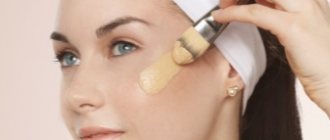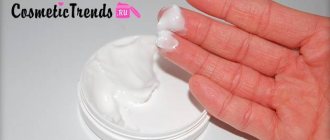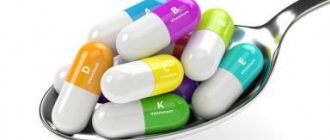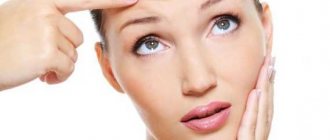Over the past few years, there has been an increase in the number of people with sensitive skin. As a result of studies conducted in France, it was found that approximately 60% of women surveyed consider their skin to be sensitive. 40% of Americans and 50% of Europeans share the same opinion. Hypersensitive facial skin can turn into a real problem; it is very important to identify the causes of this phenomenon in time and try to eliminate them. Creams, serums, masks can cause improvements; regularity of care procedures plays an important role.
Causes of increased skin sensitivity:
- environmental influences (climatic and weather conditions, dirty air, ultraviolet radiation);
- work in harmful conditions (presence of toxic impurities in the air, frequent contact with irritating solutions and substances);
- the use of substances that contain components that irritate the skin;
- frequent depilation with a razor using alcohol-containing preparations;
- diet (spicy dishes, hot food, abuse of bad habits);
- cosmetology procedures (including hardware);
- surgical interventions (blepharoplasty, lift);
- long-term treatment of skin diseases.
Signs of skin hypersensitivity:
- heredity - the presence of close relatives with hypersensitive skin, vessels located on the surface of the dermis;
- dermatoses;
- diseases of immunoallergic nature;
- diseases of internal organs (diseases of the gastrointestinal tract, thyroid gland);
- pathology of the vascular wall, VSD;
- stressful, depressive conditions;
- taking certain types of medications (group of retinoids);
- bearing a child, changes in hormonal balance, menopause, premenstrual syndrome.
In the international classification, the following signs are characteristic of hypersensitive skin:
- sensitivity to the environment, dry erythrosis, symptoms appear against the background of frequent “hot flashes”;
- sensitivity to cosmetics - most often this occurs due to the use of cosmetics that are not suitable for a certain skin type; irritating components in the composition can also cause a negative reaction;
- reactive skin - reacts to cosmetics, stressful situations, and the environment.
Increased skin sensitivity - who affects it?
The problem of dry sensitive skin has become more and more common lately. Patients of all ages suffer from hypersensitive skin. For older people, the problem is not so pressing, which is associated with the aging process. The menopause period is accompanied by a decrease in the number of superficial nerves; the skin of older people becomes less reactive.
Recent studies have found that men suffer from reactive skin more often, despite the fact that it is rougher. This reaction occurs against the background of the need for regular shaving. The procedure violates the integrity of the epidermis, which is accompanied by tissue irritation.
There is also a pattern associated with heredity. Recently, there has been an increase in the number of young people with reactive skin. The trend is associated with a worsening environmental situation, an increase in the frequency of mental illnesses, somatic diseases, changes in hormonal balance, unhealthy diet, abuse of bad habits, prolonged exposure to the sun, and lack of proper skin care.
This phenomenon is widespread in Western Europe. The main reason is considered to be the racial characteristics of people living in the Western European part of the continent. The Nordic, Alpine and False races are characterized by the features of the first two skin phototypes according to Fitzpatrick. Such people have blond or red hair and light, very sensitive skin. A thin stratum corneum, a low level of protective pigment, and an insufficient amount of lipids make the skin vulnerable to external factors. Skin reactivity is caused by a violation of barrier properties.
Dry and sensitive skin is also subject to seasonal fluctuations; sensitivity increases in autumn and winter, as well as after active solar insolation. Among the population of southern countries, the phenomenon of photo-induced aging is widespread, which occupies a leading position in the pathogenesis of age-related changes.
One of the symptoms of photoaging is thinning of the skin, the occurrence of certain processes that result in the development of hypersensitivity. This explains the increase in the number of patients with hyperreactive skin in hot countries.
Main reasons
Rules for glowing skin: how to take care of your face at 20, 30, 40 and 50 years old
As we said above, both external and internal factors can increase reactivity. Let's figure out why the skin becomes sensitive.
External reasons:
- polluted air (dust, smog, exhaust gases, etc.);
- dry air (in an air-conditioned room or during the heating season, the dermis becomes especially sensitive if you sit for 8 hours in the office, or during a long flight);
- excessive dampness (yes, our skin can also react to moisture in the air);
- strong wind and frost (very often the dermis becomes sensitive in winter);
- ultraviolet radiation (reactivity also manifests itself in hot summers);
- illiterately selected cosmetics (both skincare and decorative).
Internal reasons:
- decrease in natural protection (skin barrier, sebum secretion from glands, acidity level - disruption of the normal functioning of these mechanisms can be caused by more serious reasons);
- hormonal imbalances and changes in the body;
- bad habits: drinking alcohol, smoking, overeating (including fatty, spicy, fried and sweet);
- taking medications that can cause the dermis to become sensitive;
- constant stress, chronic fatigue, lack of adequate sleep.
Signs of increased skin reactivity
Skin hypersensitivity is not related to skin type. This phenomenon is observed among those with oily, dry, combination skin. The sensitivity of dry dermis can change under environmental influences. Stress, lack of necessary care, and the use of creams for sensitive skin also lead to skin sensitization.
According to statistics, dry skin is most often characterized by increased sensitivity. Its characteristic features are a deficiency of the sebaceous glands and their reduced activity. The thin stratum corneum is not able to provide protection from external factors. Harmful organisms and allergens penetrate through it, causing the skin to become reactive. Reactions appear periodically when internal discomfort occurs.
Clinical manifestations are reflected on the face, neck, and rarely on the scalp. The process is accompanied by the development of erythema, xerosis, peeling, rosacea, and dermatitis. It is worth noting that the clinical picture is not always present.
Increased skin reactivity manifests itself in each case individually. This phenomenon is sensory (subjective) in nature. The main signs are a feeling of tightness, heat, burning, and in some cases itching. Symptoms appear immediately after exposure or after a certain time. In difficult cases, skin intolerance occurs. All signs are accompanied by ongoing feelings of discomfort. The intensity of symptoms depends on the individual characteristics of the dermis.
Hypersensitive dermis and skin prone to allergic reactions have certain differences. Modern diagnostic methods make it easy to make distinctions.
Toning
Choose only toners marked “For sensitive skin”, “For gentle, gentle care”, “Hypoallergenic”, “Calming”, “For skin prone to irritation”, etc.
Tonic removes residues of cleansing agents from the surface of the skin, which can cause irritation and inflammation.
Sensitive skin is not suitable for tonics containing alcohol or lemon juice.
If after toning there is a burning sensation on the skin, then a cotton swab or disk with tonic should be moistened with water before use.
After using the toner, it is very useful to spray thermal water on your face, which you can buy at the pharmacy. After such care, inflammation and redness on the skin are significantly reduced.
How to distinguish
The dermis, which is prone to allergic reactions, reacts to certain components included in cosmetic products, these can even be creams for hypersensitive skin. Most often these are 1-2 cosmetic products. Allergic reactions also occur to certain foods.
An allergic reaction occurs after each contact of an allergen with the skin; its amount is most often minimal. Immune cells remember such an allergen for some reason, after which it is classified as an antigen. The allergic reaction manifests itself quite clearly. Rashes appear on the skin, it changes color, and symptoms of anaphylaxis appear.
Hypersensitive skin is characterized by low tolerance to factors/components, while there is high reactivity. The factors and substances to which the reaction occurs are not allergens. Immune cells do not react to certain substances that they remember. Hypersensitivity manifests itself as a reaction to a variety of stimuli. The reaction of the dermis with increased sensitivity is quite difficult to predict. It all depends on the individual characteristics of the body, the concentration of the substance causing the reaction. One component may not cause a reaction at all or provoke intolerance of varying degrees of intensity. In some cases, the clinical picture is completely absent. Objective signs are subjective sensations. The type of reactions depends on the chemical composition of the ingredients, the characteristics of its interaction with dermal cells, and physiological characteristics.
The reaction to the allergen occurs on the basis of the immunoallergic mechanism. Hypersensitivity is triggered by the activation of a neuroimmune mechanism. C-fiber hyperactivation causes a sensory response that is fundamental to neurogenic inflammation.
People with hypersensitive skin should avoid exposure to temperature changes, exposure to the sun, eating spicy hot foods, and abuse of bad habits. Regular care for sensitive skin at home is important.
Features of care for hypersensitive skin
Current trends in the treatment of increased skin reactivity involve influencing the pathogenesis of neurogenic inflammatory processes. Treatment is also aimed at creating certain conditions that could prevent its occurrence.
Experts have come to the conclusion that it is necessary to change the diet of patients with hypersensitive skin. The menu should include active dietary supplements containing plant extracts and antioxidants. Particular attention is paid to the presence of omega-3 and omega-6 acids, as they help reduce inflammatory processes. Bioactive supplements containing phytoestrogens are also considered very useful, especially for women over 35 years of age. They contain substances that imitate the function of estrogen; under their influence, the production of dermal ceramides increases.
Maintaining a healthy lifestyle also plays an important role. People with hypersensitive skin should avoid exposure to temperature changes, exposure to the sun, eating spicy hot foods, and abuse of bad habits. Regular skin care at home plays an important role.
To cleanse the reactive dermis, it is recommended to use cosmetics for sensitive skin with a light texture. The components allantoin, panthenol, bisabolol have excellent soothing properties. When washing, you should use melt water. A prerequisite is to apply a moisturizer for sensitive skin in the morning and evening.
The formulas of creams and serums for sensitive skin should be aimed at restoring the lipid barrier. The composition should include ceramides; the components should promote hydration, soothing, and restoration.
Components that should be included in a cream for hypersensitive skin:
- oils, phytoestrogens;
- biopolymers, plant extracts;
- antioxidants;
- substances that reduce the production of anti-inflammatory cytokines.
Particular attention should be paid to moisturizing for sensitive skin during the cold season. Special thick creams will help protect the dermis from the harmful effects of the environment. In spring and summer, it is recommended to use products for sensitive skin with ultraviolet protection with an SPF factor of 30-50. Many people prefer cosmetics and oils for sensitive skin from well-known brands. Pharmaceutical products also show high effectiveness. Special masks for sensitive facial skin will also help improve the condition of the dermis.
What can you do about dry sensitive skin?
Sensitive skin types can benefit from some lifestyle changes that can help protect the skin. Firstly, if you have allergic reactions, you need to consult an allergist. A patch test can reveal which ingredients are allergenic so you can avoid them in the future.
Next steps to take:
- Protect from external weather factors. Wear hats, clothing and safe sunscreen.
- Detox space. Get rid of toxic elements as much as possible. Get rid of chemical and environmental irritants in personal care products, laundry, household cleaners, furniture, paints, etc.
- Hydration. Sensitive skin is usually dry, which means it is vulnerable. Use a humidifier.
- Change your washcloth, pillowcase and cosmetics more often. Wash makeup brushes, etc. frequently.
- Shower filter. Many city water sources may contain chlorine or other chemicals that can cause a skin reaction. A shower filter can help reduce your exposure to these chemicals.
- Test. Before using new products, always test them on your wrist, arm, or behind your ear before applying to your face or body.
- Avoid triggers. As much as possible, avoid aggressive substances, for example: lanolin, soap, alcohols, chemicals, fragrances and the like.
Professional care
People with hypersensitive skin should take certain precautions. Microcurrent therapy will help get rid of pathological symptoms at the acute stage. Its action is aimed at normalizing the condition of the skin. After a course of procedures, blood vessels are strengthened, the dermis is restored, and the severity of inflammation is reduced. An excellent effect is observed after ozone therapy. The procedure stimulates the immune system, helps get rid of inflammation, and has antioxidant properties.
At the remission stage, superficial peels for sensitive skin (salicylic, almond, etc.) are prescribed. Beforehand, a sensitivity test must be carried out. Peeling with retinoids is in greatest demand; the procedure allows you to get rid of aesthetic problems. This method shows effectiveness in caring for hypersensitive skin.
Biorevitalization with hyaluronic acid is also part of complex therapy. The procedure is aimed at normalizing homeostasis. Biorevitalization has healing, vascular strengthening properties and helps normalize microcirculation. It helps get rid of inflammation, strengthens the dermis, and after it the skin looks beautiful and fresh.
Mesotherapy requires caution. Precautions are associated with the need to administer several drugs simultaneously. A preliminary check for allergic reactions is required. The administration of lidocaine can also cause local reactions.
If you have sensitive skin, some cosmetic procedures are prohibited. You should avoid TCA peels and laser resurfacing. After carrying out the above procedures, an inflammatory process develops, which can cause rosacea and aggravate the problem of increased skin sensitivity.
The possibility of carrying out and the results of using professional cosmetics for hypersensitive skin depend on the individual characteristics of the body. The procedures should also be combined with restorative therapy with native hyaluronic acid preparations. In the case of glycolic peels, preliminary desensitizing therapy with peels of lower concentrations is possible.
An integrated approach will help solve problems with hypersensitive skin. Regular skin care, cleansing, moisturizing, applying creams for dry and sensitive skin will also help keep it beautiful and healthy.
The best creams for sensitive skin care
SkinCeuticals Triple Lipid Restore
This moisturizer helps soothe and restore skin with ceramides and natural oils. An excellent choice for aging skin. The formula also contains vitamin E, essential oils, ceramides and glycerin to boost hydration and protect against free radicals that can further damage the skin.
Dermalogica Calm Water Gel
This moisturizer comes recommended by Ariel Kauwar, MD, director of New York Laser & Skin Care and clinical professor of dermatology at New York University School of Medicine. This delicious hyaluronic acid, fragrance-free, paraben-free cream is soothing with cactus pear extract. The gel texture leaves no trace on the skin.
DR. WANG HERBAL SKINCARE Nourishing Youth Serum
Developed by dermatologist Stephen Wang, MD, this hydrating cream-serum is a great option for those who love a lightweight, hydrating texture. It is suitable for sensitive skin. The main soothing ingredient of the serum is aloe leaf juice, and the second is squalane and vegetable oils. Therefore, it moisturizes well.
KIEHL'S Dermatologist Solutions Centella Cica Cream
The main component of Kiehl's hypoallergenic Cica cream is the medicinal herb Centella asiatica (also known as centella asiatica or gotu kola). The cream does not contain potentially irritating substances: alcohol and fragrance.
Aveeno Ultra-Calming Nourishing Night Cream
Pyrethrum is a plant extract that helps calm inflammation. This unscented moisturizer can be used for people with sensitive skin, facial redness and rosacea










